Reviews
various
UK, 1963–present
Credits
Review by Leo Goldsmith
Posted on 04 September 2010
Source BBC Video DVD
Related articles
Reviews
Doctor Who—Part 1: Geneses
External links
Categories Favorites: Time Travel
Part 2: Destinies
In his 1975 book Television: Technology and Cultural Form, Raymond Williams famously discusses the notion of television’s “flow,” the formal continuity of a channel’s programming, comprising all types of shows, advertising, station-identification markers, and so forth, intended to create a harmonious and attention-sustaining experience for the viewer. Recent changes in the way that television is distributed and watched - that is, via cablecast, DVR, and DVD, rather than broadcast, timed video recording, and reruns - have in some ways threatened this concept, and in other ways sustained it. Rarely do viewers now watch a continuous, uninterrupted television broadcast, thus problematizing the decades-old practices of televisual flow, and instead prompting unanticipated changes in the way individual television programs are produced.
Probably the most significant of these is the rise in popularity - and respectability - of the television serial, a format once largely reserved for daily, daytime television (like soap operas), which demands from viewers continuous (but not regularly scheduled) viewing through the use of continuous narratives rather than episodic structures. The format and method of distribution of series such as The Sopranos, The Wire, Lost, Breaking Bad, et al, are at once more liberating and more compulsive than similar series of years past: they free the individual viewer from the need to adhere to a programming schedule, but also inspire in their audiences a sense of completism, if not obsessiveness. Not only is there no reason or excuse to miss an episode of a beloved series, but it’s also dangerous to do so - one risks losing the coherence of the plotline - turning what was once a punctual, but more casually taken-up experience into something that can or even must be watched in full or even with compulsion (in marathon DVD screenings, for example).1
Doctor Who is a notable entry in this formal evolution, as it spans both the former and latter iterations of television serials: call them the daytime “soap-opera” style and the modern “TV-on-DVD” style. Or perhaps it would be more accurate to say that the “rebooting” of Doctor Who in 2005 by writer and producer Russell T. Davies (and continuation of the series under Steven Moffat) represents an attempt to translate a 20th century format into a 21st century one. Either way, the inherent problem is one that’s common to all creative franchises: the need to strike a balance between evolution and familiarity, to innovate while also maintaining coherence.
The simplest way for any television program to establish continuity is through its credits and its theme music, and indeed Doctor Who benefits from having one of the most iconic opening sequences in television history. From its initial episode, the program boasted an innovative electronic score written by legendary television composer Ron Grainer and developed by Delia Derbyshire of the BBC Radiophonic Workshop using tape loops and test-tone oscillators. This score predated the availability of mass-produced, commercially available synthesizers, and so was created entirely through the painstaking manipulation of analog tape. With minor alterations, Derbyshire’s arrangement served as the theme music for the first seventeen seasons of the program, and during this time the theme was accompanied by graphic designer Bernard Lodge’s series of experimental credit sequences. Experimenting first with video feedback, or the “howl-around” technique, and later, following the innovations of 2001’s stargate sequence, with “slit-scan” photography, Lodge created an impression of the time tunnel or wormhole through which the TARDIS travels. The classic series rarely visualized the time vortex itself, and so the five original credit sequences Lodge created serve as unusual examples of experimental abstraction in a major television series.
While all of the later credit sequences maintain some of these elements, the most current versions literalize the idea of time-space travel by featuring a CG TARDIS flying erratically through a wormhole. So much for abstraction, but then, generally speaking, the new version of Doctor Who often seeks to “normalize” certain of the quirkier elements of the original show, making them cohere with more widespread genre conventions rather than the particular formulae of the franchise. So, as already discussed, Doctor Who relies on the ability to frequently “regenerate” its protagonist in different forms as lead actors age, contracts expire, and tastes shift. In the “rebooted” version, the trend of casting younger, tougher, more conventionally heroic-looking actors in the lead role has supplanted the casting of lovable, very particularly English-seeming oddballs.
This particular means of character-rebooting is nothing terribly new or surprising, but it’s interesting to note how dramatically it has affected the specifically English archetypes of popular culture, like Sherlock Holmes and James Bond. One might attribute this to a more general trend of homogenization in culture - the tendency to make everything more “Hollywood” - but it probably has much to do with changing ideas about Britishness as well. Just as the character of James Bond, as Simon Winder has observed, helped to sustain the idea of Britain as a world-saving superpower throughout the 1960s and 70s, long after the nation’s imperial potency had waned, the character of the Doctor might be said to sustain the image of England as a cultural and intellectual lodestone. The Fourth Doctor, as portrayed by Tom Baker, represents the heart of the series and perhaps the most essential distillation of continually fluid character: he combines the paternal demeanor and professorial intellect of the first Doctor (William Hartnell), the mischievous Chaplinesque qualities of the second (Patrick Troughton), and the dandyish extravagance of the third (Jon Pertwee). He is, of course, Gallifreyan - not human - but his obvious fondness for English culture (the police box, jelly-babies, cups of tea) are important markers of his connection to an English self-image that, like Tolkien’s Hobbits, suggests a race of benevolent outsiders who, despite physical awkwardness, eccentricities of habit and taste, and relatively small numbers, can use their intellectual superiority to restore peace and order in a chaotic, violent universe.
As in all similar works of science fiction, the varied and famously rubbery “carnival of monsters” in Doctor Who - from Autons to Zygons, Silurians to Cybermen - implies a great deal about contemporary, culturally specific sentiments about international politics. But unlike Star Trek, which posits that violent interplanetary struggle (i.e. the Cold War) can be successfully policed by a racially diverse military (i.e. America), Doctor Who is perpetually concerned with the moral implications of intervention.2 It is significant, for example, that the Doctor comes from a race of people - archetypically like the English - who are generally not interested in intervening unless it is proper or absolutely necessary. (Indeed, he is often punished by the other Gallifreyan Time Lords for exceeding these limits of propriety, as in the third incarnation, who is sentenced to exile on Earth and whose memory of how to operate the TARDIS is blocked.)
As it is also a time travel narrative, this concern often manifests itself as a concern over the course of evolution. When the Doctor is not simply traveling around time and space for fun, seemingly a bit cavalier about perverting things like chronology, he is mainly preoccupied with two projects: ensuring that the structure of time and space is not fundamentally altered, and guarding against the way certain species evolve. Given his natural affinity for the planet, he is particularly concerned about the genesis and development of Earth life and human civilization. The 1979 episode The City of Death, for example, concerns the explosion of a Jagaroth spacecraft on Earth four billion years ago that sparks the amino-acid soup to combine to form the first living cells. (Human civilization, it is later revealed, has been driven forward over the centuries by the Jagaroths in order to develop time travel technology that will stop this explosion from happening, a prevention which the Doctor must himself prevent.) Similarly, in the 1975 episode The Ark in Space, the Doctor helps the last survivors of human civilization, who have been cryogenically suspended in a floating ark in orbit around an uninhabitable Earth for several thousand years and have been infiltrated by a genetic mutation.
Thus, his mission can be seen as a kind of time- and evolution-maintenance project, ensuring the order of both the structure and content of time and space with a few helpful nudges. Such is the Doctor’s probity that he even relents in unduly influencing the evolution of his most sophisticated nemeses, the Daleks. These small, green, blobbish creatures, mutated to lack consciences and housed in small tanks, shriek “Exterminate!” as they seek to destroy, well, virtually everything, but as demonstrated in writer and Dalek-creator Terry Nation’s excellent bookending pieces, Genesis of the Daleks (1975) and Destiny of the Daleks (1979), the Doctor demurs when given the chance to wipe out their species before it begins. Time Lord or no, the Doctor recognizes the perils of playing God, preferring to use the omnipotence offered time-travel more as a tourist than as an imperialist.
In this sense, time travel offers a metaphor for a kind of freedom from chronology and narrative, a liberated experience implying a mobility from the linear constraints of time. This may seem obvious, but consider how miserable time travel narratives can be, how often they dwell upon feelings of nostalgia or regret for lost time, or how often they posit time travel itself as a threat to the natural order, a perversion of the course of our genealogies or the stability of the present moment. For Doctor Who, by contrast, the notion of the malleability of time has a more positive inflection. Life itself is renewable - it can be regenerated as necessary - and what was once conceived as the inexorable flow of time can be imagined as something less linear and more expansive, with more possibilities and more dimensions.
- This shift also threatens the sense of “liveness” - not only of currency, but also of immediacy - that broadcast media like television have always sought to put across. The idea that television and the radio constitute parallel realities - up-to-the-minute reflections of what’s going on in the world, not only in sports or in “the news,” but also in popular culture (event programming, series finales, etc.) - is an idea that is now steadily vanishing in favor of the up-to-the-second medium of the internet. It bears mentioning, though that all of these media - radio, television, and the internet, as well as cinema, videogames, and music - are oftentimes directed by the more or less coherent networks of mass-media corporations, and, as N.D. Rodowick has suggested, that the often-espoused discourses of competition between media (e.g. cinema vs. television, television vs. the internet, video games vs. cinema) are in fact ways of more inspiring collaboration across different media platforms and more clearly differentiating them as products in the marketplace. Thus, the idea that various formats of widescreen cinema (Cinemascope, VistaVision, Technirama, etc.) were created in the 1950s to “fight” the rise of television is sort of bullshit. Even by that time, large mass-media conglomerates had stakes in both media, so this “competition” between them was really intended to better define cinema as an prestigious, artistic experience at a time when television was establishing itself as a populist medium. The idea is not that the individual consumer should watch more of one than the other, but that she should watch more of both. ↩
- Star Wars benefits from a certain ambiguity here, being a reflection of both the American Revolutionary War and the resistance against fascism in World War II. ↩
More Favorites: Time Travel
-

Bill and Ted’s Excellent Adventure
1989 -
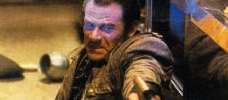
Trancers
1985 -

The Time Machine
1960 -

Groundhog Day
1993 -

Warlock
1989 -

The Navigator
1988 -
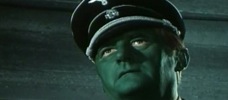
Tomorrow I’ll Wake Up and Scald Myself with Tea
1977 -
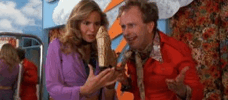
The Spirit of ‘76
1990 -

Flight of the Navigator
1986 -
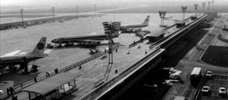
La jetée
1962 -
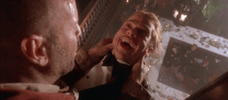
Twelve Monkeys
1995 -

Beastmaster 2: Through the Portal of Time
1991 -
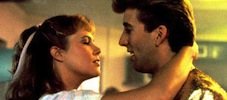
Peggy Sue Got Married
1986 -
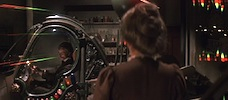
Time After Time
1979 -

Somewhere in Time
1980 -
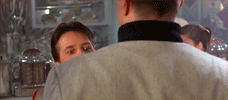
Back to the Future
1985 -

Back to the Future Part II
1989 -
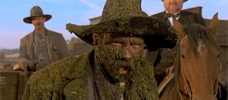
Back to the Future Part III
1990 -
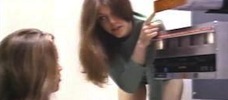
Idaho Transfer
1973 -
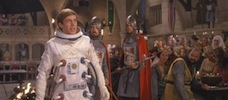
Unidentified Flying Oddball
1979 -
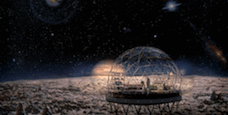
Slaughterhouse-Five
1972 -

The Lake House
2006 -
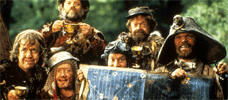
Time Bandits
1981 -
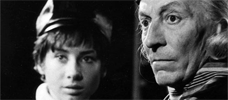
Doctor Who
1963–present -
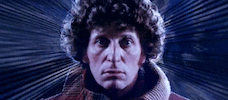
Doctor Who
1963–present
We don’t do comments anymore, but you may contact us here or find us on Twitter or Facebook.



